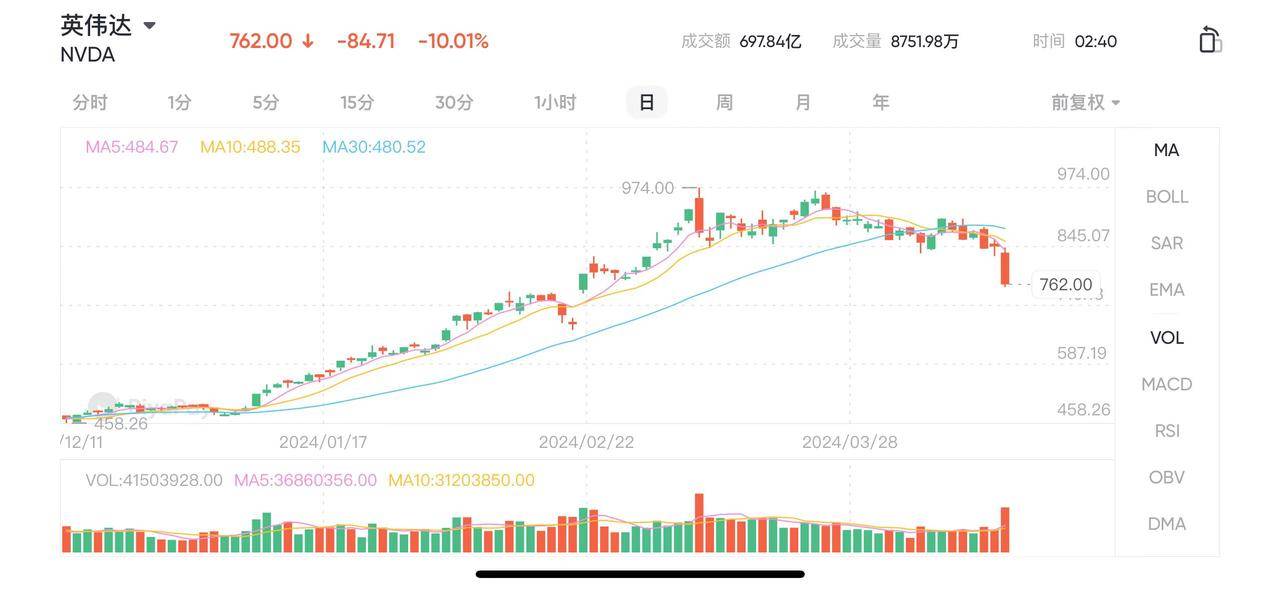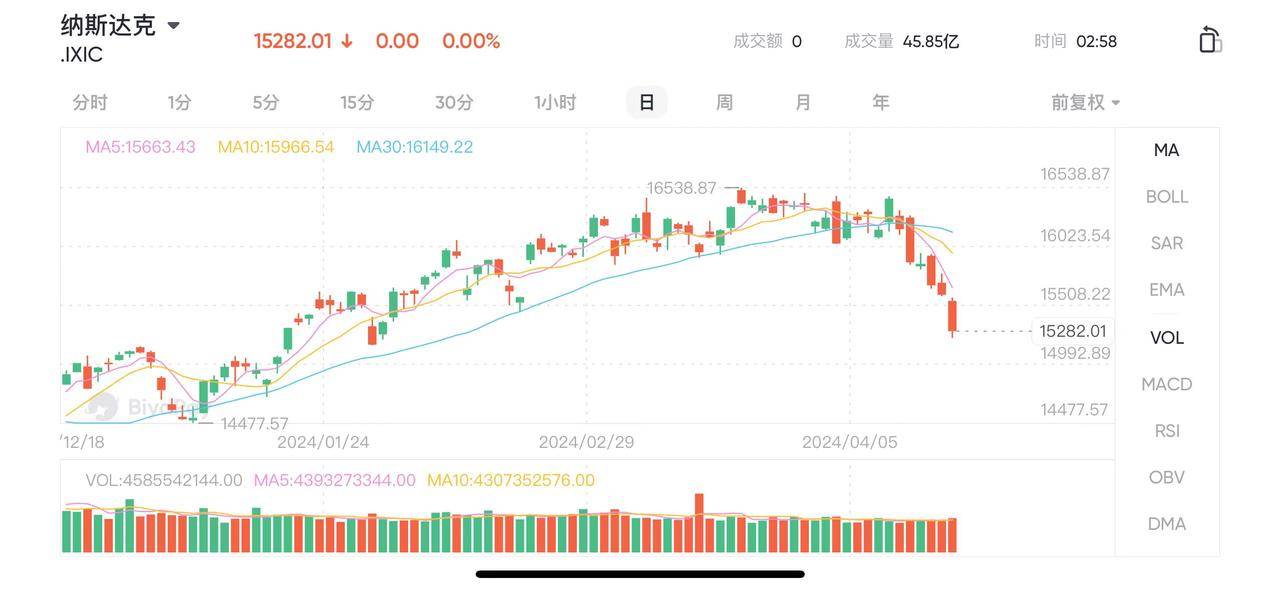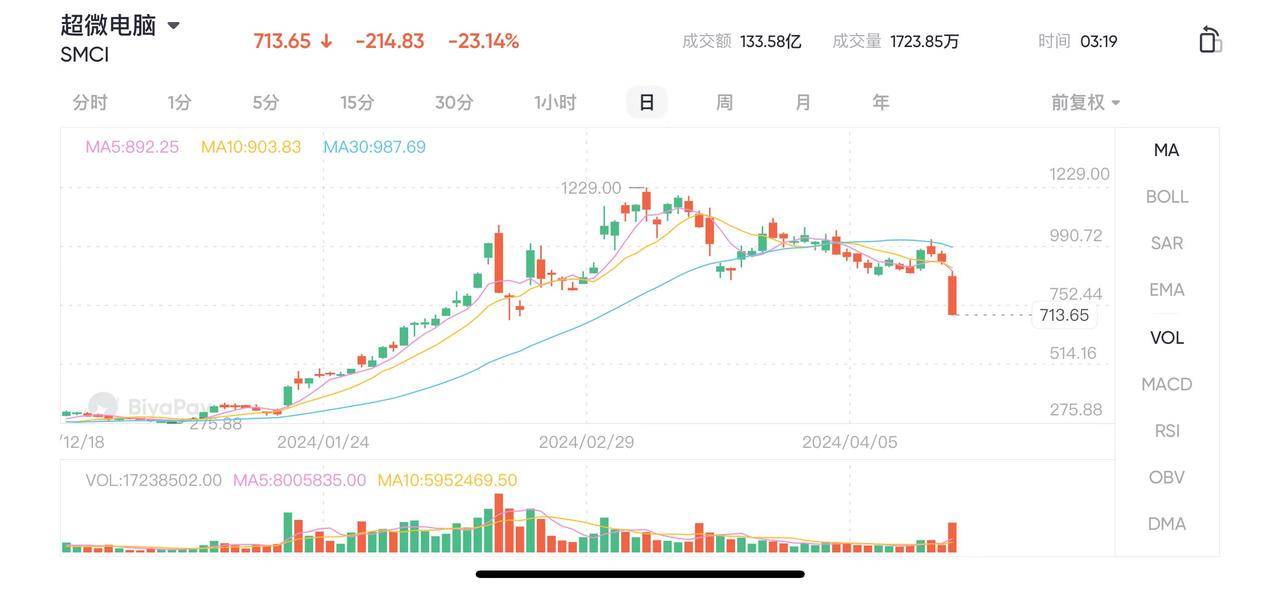- Remittance
- Exchange Rate
- Stock
- Events
- EasyCard
- More
- Download
NVIDIA's Collapse? Plunges 10%! Who's to Blame? Can NVIDIA Bounce Back, Should Investors Buy the Dip
NVIDIA has finally crashed!
After six consecutive trading days of gains, accumulating an increase of over 19%, NVIDIA’s stock price finally plummeted, marking its largest single-day drop in nine months.
According to the multi-asset trading wallet BiyaPay, on Friday (April 19th), NVIDIA fell by 10%, closing at $762.00. This was the largest drop since May 31, 2023, with a single-day market cap shrinkage of about $130 billion, one of the largest in the history of U.S. stocks.

Currently, NVIDIA’s market cap is about $2.2 trillion, making it the third-largest company in the S&P 500 index, following only Microsoft and Apple.
It’s noteworthy that the chip sector, led by NVIDIA, almost completely collapsed overnight.
Marvell Technology dropped over 11%, NanoSemi fell nearly 10%, Broadcom dropped 7%, ARM decreased by 6.6%, ASML ADR fell more than 5%, and others like ON Semiconductor, Microchip Technology, Intel, Qualcomm, TSMC, AMD, and Micron Technology all declined. The Semiconductor Sector Index ETF and the Philadelphia Semiconductor Index both fell more than 4%.
Why did NVIDIA suddenly crash?
The sudden fall of NVIDIA was actually not surprising.
Investors began to take profits
Earlier in the day, NVIDIA’s stock price rose 5.1%, pushing a momentum indicator to its highest level since November 2021, suggesting that a pullback was ripe. On Friday, the Relative Strength Index climbed above 85, the highest since November 2021, and then fell to around 70.
Seeing NVIDIA’s stock price setting new records nearly every day, analysts felt it was somewhat unhealthy, reminiscent of the wild tech market mentality of 1999 and 2000.
NVIDIA is preparing for its annual GTC conference on March 18-21, where the market might experience a “surge.” Some analysts expressed concerns that some investors might take profits after the GTC conference, leading to a pullback in NVIDIA’s stock price.
Market “fear of heights” sentiment is growing
In fact, NVIDIA’s stock price has soared nearly 90% this year, with a market value surpassing $2 trillion, higher than Amazon and Alphabet’s parent company, and only 13% behind Apple. Ten years ago, NVIDIA’s market value was only 1/47th of Apple’s.
Additionally, supported by the “Tech Seven Sisters,” the NASDAQ has risen over 40% over the past year, and the S&P 500 has also seen gains of over 30%.

As the stock market continues to break records, investors are experiencing “fear of heights,” and more voices are trying to cool down the overheated market.
Earlier, BTIG’s chief market technician, Jonathan Krinsky, warned that some form of shakeout might be imminent.
A Citibank report also indicated that the investment market is showing excessive optimism and a “one-sided” trend, increasing the risk of a market correction.
Meanwhile, the market has already anticipated the Fed’s rate cuts, but recent hot inflation data and mixed non-farm payroll figures suggest that any unexpected move by the Fed could cause a “bloodbath” in tech stocks.
The direct trigger—Supermicro’s plummet
A key factor causing market turbulence was the sudden drop in the stock price of Supermicro (SMCI), which was touted as having “tenfold annual growth.” According to the multi-asset trading wallet BiyaPay, last Friday (April 19th), Supermicro plummeted 23.14%, closing at $713.65.

Last Friday, the company announced in a press release that it plans to release its third-quarter financial results on April 30th, but failed to provide the usual preliminary performance report. This unexpected change caused great unrest in the market, leading many investors to rush to sell their shares.
Supermicro was expected to report Q1 2024 sales between $3.7 billion and $4.1 billion, with non-GAAP EPS expected between $5.20 and $6.01. For the full fiscal year 2024, total revenue was expected to be between $14.3 billion and $14.7 billion.
According to data from the market analysis platform FactSet, the market’s general expectation for this quarter was sales of $4 billion and adjusted EPS of $5.84; for the full year, expected sales of $14.6 billion and adjusted EPS of $21.95.
In January this year, after Supermicro raised its sales and profit forecasts for the second quarter by 11 days, its stock price significantly rose, sparking a surge in AI stocks. Therefore, the company’s failure to release a positive preliminary statement, especially in the critical area of AI, was interpreted by the market as a negative signal.
Supermicro’s main business involves selling computers for website servers, data storage, and AI training to enterprises. The company has established partnerships with key players such as NVIDIA, NASA, and Japanese electronics companies, highlighting its market importance. Supermicro’s success is crucial in providing the infrastructure needed for AI chips, including cooling solutions that depend on Supermicro for different manufacturers, allowing the company to benefit from the overall growth of the AI industry.
Therefore, when Supermicro’s stock price significantly dropped, this impact quickly spread throughout the industry, particularly affecting its main partner, NVIDIA.
As a major producer of AI chips, NVIDIA relies on Supermicro’s server infrastructure. The fall in Supermicro’s stock price directly affected the stock price assessments of NVIDIA and related companies, again highlighting the close relationship between the two companies.
In fact, this is not the first time Supermicro has impacted NVIDIA and other AI-related stocks. Last August, a single-day plummet in Supermicro’s stock price of over 23% also caused NVIDIA’s stock price to drop nearly 5% that day.
Is NVIDIA still worth investing in?
Without a doubt, with NVIDIA’s recent drop, its valuation has come down.
Although the market is currently undergoing adjustments, given the long-term growth prospects in the AI sector, big money is likely not to easily exit this field. Moving forward, the market’s focus will increasingly be on the performance of key tech companies like NVIDIA and their annual capital expenditures. Furthermore, further rises in the market may also require new capital injections and the emergence of a “grand narrative.”
From the current trend in valuations, NVIDIA’s price-to-earnings ratio (PE) has significantly dropped from a high of 243.49 in July 2023 to 63.87 as of April 19, 2024.
This massive re-pricing reflects a major market adjustment and a shift in investor sentiment. The sharp decrease in the PE ratio indicates that growth expectations have become more moderate, or that the stock price has been adjusted to a level considered more in line with the company’s earning potential.
With NVIDIA experiencing a significant 10% drop last Friday, many investors are concerned about its future support levels. Especially now, NVIDIA’s stock price has fallen below the critical 50-day moving average.

Next, we will specifically monitor an important support price range at the $738 gap support level. This range is crucial because, in February, it was a gap position due to positive financial reports, representing a recent concentration of profit-taking chips. Institutions will not want short sellers to push the price below this level. Investors can monitor this position in advance, and once the opportunity arises, they can use the new multi-asset broker BiyaPay to directly convert funds into USD, invest in NVIDIA for profit without needing an offshore account; additionally, investors can also link their Charles Schwab offshore accounts with BiyaPay, withdrawing dollars to invest with Charles Schwab, with same-day withdrawal and arrival, not missing the market timing.
Conclusion
As the elder statesman of AI concept stocks, NVIDIA is not easily defeated. As long as the long-term growth prospects of the AI sector remain, NVIDIA’s long-term market outlook is still intact. A sharp drop is not bad news; rather, it is an opportunity for more investors to get on board.

























